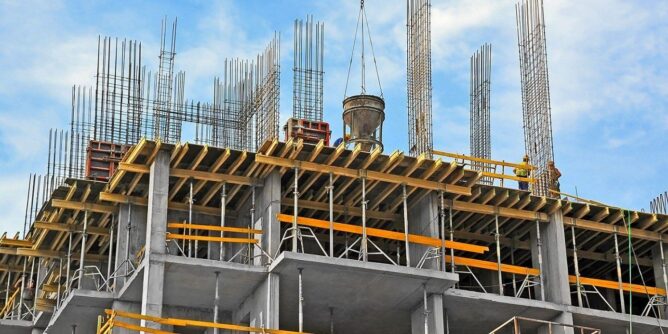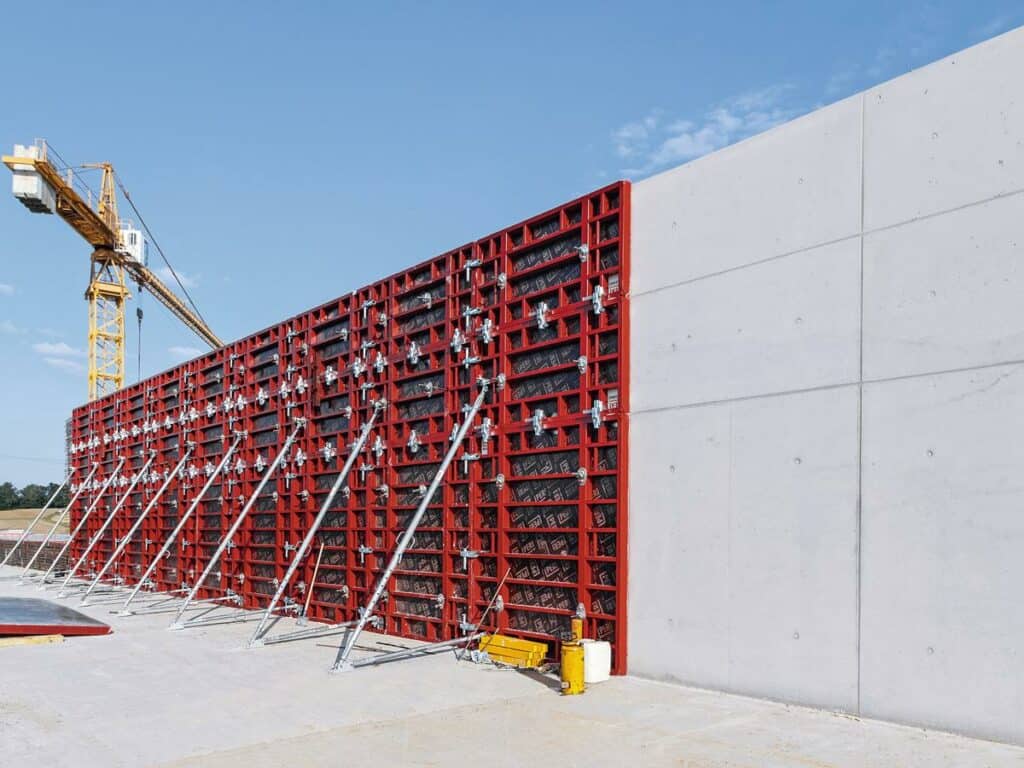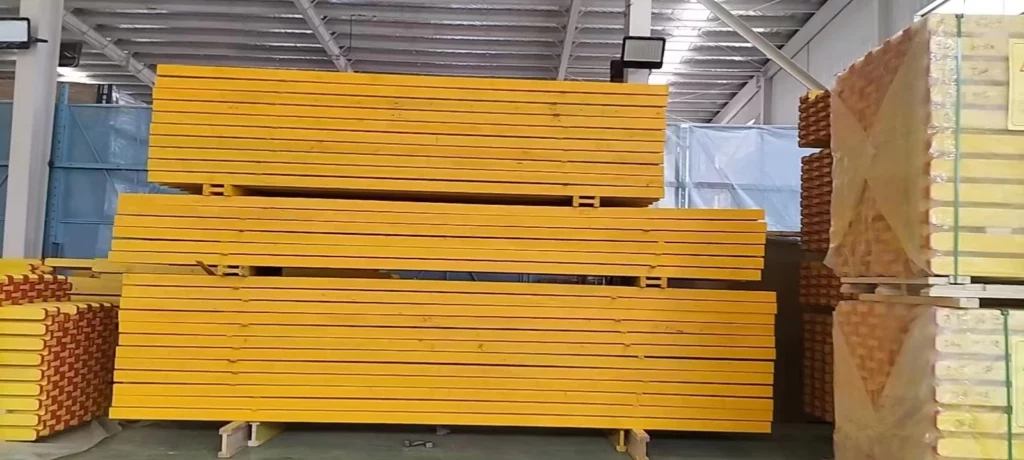
In the world of construction, formwork plays a crucial role in shaping concrete structures. One of the essential components of formwork is LVL timber, which stands for Laminated Veneer Lumber. This article will provide you with valuable tips on choosing the best LVL timber for your formwork needs. Let’s dive in!
Understanding LVL Timber and Its Importance in Formwork
LVL timber is a type of engineered wood product made by bonding thin layers of wood veneers together. This process enhances its strength and durability, making it an ideal choice for formwork applications.
Formwork refers to the temporary structure used to support freshly poured concrete until it hardens and gains sufficient strength to carry its own weight. Lvl formwork is commonly used in formwork due to its resistance to warping, splitting, and knot formation. Its superior strength-to-weight ratio makes it a reliable material for constructing sturdy and safe formwork systems.
What is LVL Timber?
Laminated Veneer Lumber (LVL) is a structural timber product made by laminating thin veneers of wood together under high pressure and temperature. This engineered wood is typically manufactured from fast-growing softwood species like pine or spruce. The continuous orientation of wood fibers in LVL timber provides excellent strength and dimensional stability.

Why is LVL Timber Preferred for Formwork?
LVL timber offers numerous advantages that make it a preferred material for formwork applications. Firstly, its high strength allows it to withstand the heavy loads imposed by wet concrete. Secondly, LVL timber has excellent durability, ensuring that it can endure the repetitive use and exposure to harsh environmental conditions on construction sites.
Furthermore, LVL timber has consistent quality and dimensional stability, which is essential for maintaining the accuracy and integrity of formwork structures. Its smooth surface finish minimizes concrete adhesion, making formwork removal easier and more efficient.
Moreover, LVL timber is known for its sustainability. It is made from fast-growing softwood species, which means that it can be produced in large quantities without depleting natural forests. Additionally, the manufacturing process of LVL timber requires less energy compared to other construction materials, making it an environmentally friendly choice.
Another advantage of LVL timber in formwork is its versatility. It can be easily cut, shaped, and joined to create customized formwork systems that meet specific project requirements. This flexibility allows for efficient construction processes and reduces material waste.
Factors to Consider When Choosing LVL Timber for Formwork
Now that we understand the importance of LVL timber in formwork, let’s explore the key factors that influence its suitability for your specific project.
Learn more at: The Role of LVL Timber Formwork in Sustainable Construction
Assessing the Quality of LVL Timber
When selecting LVL timber for formwork, it is crucial to assess its quality. Look for products that comply with relevant industry standards and have undergone rigorous testing. Quality LVL timber should exhibit minimal defects, such as defects caused by manufacturing or veneer damage.
Inspect the timber for any visible signs of delamination, such as gaps between the layers. A reliable supplier should provide you with detailed information about the manufacturing process and quality control measures in place.
Furthermore, it is important to consider the source of the timber. Sustainable forestry practices ensure that the LVL timber is harvested responsibly, minimizing the impact on the environment. Look for certifications such as the Forest Stewardship Council (FSC) to ensure that the timber you choose is sourced ethically.
Importance of Timber Size and Thickness
The size and thickness of LVL timber are important considerations in formwork design. The size refers to the overall dimensions of the timber, while thickness determines its load-bearing capacity. Assess the specific requirements of your formwork project and consult structural engineers or formwork experts to determine the appropriate timber size and thickness.
Choosing the right dimensions will ensure that the formwork is robust enough to support the anticipated concrete load and maintain structural integrity throughout the construction process. Additionally, considering the length of the timber is essential, as longer lengths may require additional support or bracing to prevent sagging or bending. Find more about lengths at https://www.open.edu/openlearn/ocw/mod/oucontent/view.php?id=19173&printable=1
Considering the Timber’s Moisture Content
Moisture content is an important aspect to consider when selecting LVL timber for formwork. Moisture affects the dimensional stability and strength properties of the wood. High moisture content can lead to warping, swelling, and reduced load-bearing capacity.
It is crucial to ensure that the LVL timber has been properly kiln-dried to achieve the recommended moisture content for your specific climate and application. Consult with suppliers who can provide you with accurate information about the timber’s moisture content and its suitability for your formwork needs.
Furthermore, it is worth noting that the moisture content of the surrounding environment during construction can also impact the performance of the LVL timber. Taking measures to protect the timber from excessive moisture or prolonged exposure to rain is essential to maintain its structural integrity.
The Role of Timber Grade in Formwork
The grade of LVL timber also plays a significant role in its suitability for formwork. Timber grading provides a standardized way to classify the quality and strength of wood products. The grading process involves evaluating various properties, such as knots, surface defects, and overall structural integrity.
Understanding Timber Grading
Timber grading systems vary across countries, but they generally classify wood products into different grades based on their visual appearance and mechanical properties. For formwork applications, it is advisable to choose high-grade LVL timber to ensure optimal performance and longevity.
How to Identify High-Grade LVL Timber
High-grade LVL timber should exhibit minimal surface defects, such as knots or cracks, that could compromise its strength and durability. Additionally, it should have a uniform appearance with consistent color, density, and grain orientation.
Look for products that are certified by reputable organizations, indicating that they have met the required standards for structural performance. A reliable supplier should be able to provide you with detailed information about the timber’s grade and its suitability for formwork purposes.
When selecting high-grade LVL timber for formwork, it is essential to consider not only the visual appearance but also the specific mechanical properties required for the intended application. Different formwork projects may demand varying levels of strength, stiffness, and dimensional stability, so understanding the performance characteristics of the timber grade is crucial.
Furthermore, the manufacturing process of LVL timber can also impact its quality and suitability for formwork. Factors such as the type of adhesive used, the pressing method, and the quality control measures implemented during production can influence the overall performance of the timber in formwork applications.
Environmental Impact of LVL Timber
As sustainability becomes a crucial consideration in construction, it is important to assess the environmental impact of the materials we use. LVL timber offers several environmental benefits that make it an eco-friendly choice for formwork applications.

Sustainability of LVL Timber
Most LVL timber is manufactured from fast-growing plantation trees, which are a sustainable and renewable resource. The efficient use of timber veneers in the manufacturing process ensures minimal waste and maximum utilization of the available material. To find more about plantation click here.
Furthermore, wood is a carbon-neutral material, meaning it absorbs and stores carbon dioxide throughout its lifecycle. Using LVL timber in formwork helps reduce carbon emissions compared to alternative materials like steel or plastic.
Eco-friendly Practices in Timber Production
It is important to select LVL timber from suppliers that employ sustainable practices in timber production. Look for certifications such as Forest Stewardship Council (FSC) or Programme for Endorsement of Forest Certification (PEFC) as they indicate that the timber has been sourced responsibly from well-managed forests.
Choosing timber from sustainably managed sources ensures that you are actively contributing to the preservation of our forests and promoting a greener construction industry.
Energy Efficiency of LVL Timber
Another aspect of the environmental impact of LVL timber is its energy efficiency. The production process of LVL timber requires less energy compared to other construction materials, making it a more sustainable choice. This lower energy consumption results in reduced greenhouse gas emissions and helps in combating climate change.
Additionally, the thermal properties of wood make LVL timber an excellent insulator, reducing the need for additional heating or cooling in buildings. This leads to lower energy consumption during the operational phase of a structure, further enhancing its overall environmental performance.
Recyclability and Biodegradability of LVL Timber
One of the key advantages of LVL timber is its recyclability and biodegradability. At the end of its lifecycle, LVL timber can be recycled into new products or used as a renewable energy source through combustion. If disposed of, it will naturally decompose without releasing harmful substances, unlike many synthetic materials.
This circular approach to timber usage ensures that resources are utilized efficiently and sustainably, contributing to a more circular economy and reducing the environmental impact of construction activities.
Safety Measures When Using LVL Timber for Formwork
While LVL timber is a safe and reliable material for formwork, it is essential to follow proper safety measures during its handling, storage, and installation.
Handling and Storage of LVL Timber
When handling LVL timber, ensure that proper lifting techniques are used to prevent injuries. Use appropriate personal protective equipment, such as gloves and safety boots, to protect against splinters or falling objects.
It is also important to consider the weight and size of the LVL timber pieces. Larger and heavier pieces may require the assistance of additional workers or the use of mechanical lifting equipment. This will help prevent strain or accidents caused by attempting to lift or move heavy timber on your own.
Store LVL timber in a dry, well-ventilated area to prevent moisture absorption, which can lead to dimensional changes and reduced strength. Stack the timber properly, using spacers to allow air circulation and prevent deformations.
Furthermore, it is crucial to inspect the timber for any signs of damage or defects before use. Look for cracks, splits, or any other abnormalities that may compromise the structural integrity of the timber. If any issues are found, it is best to replace the damaged pieces with new ones to ensure the safety of the formwork.
Precautions During Installation
During formwork installation, make sure to follow the recommended design and installation guidelines provided by formwork system manufacturers or structural engineers. Use the specified fasteners and connectors to ensure the secure attachment of LVL timber components.
It is also important to consider the environmental conditions during installation. Extreme temperatures or excessive humidity can affect the performance of the LVL timber. Therefore, it is advisable to install the formwork during favorable weather conditions to avoid any potential issues.
Inspect the formwork regularly for any signs of damage or deterioration. If any issues are identified, repair or replace the LVL timber promptly to maintain the integrity and safety of the formwork structure.
Additionally, it is crucial to ensure that the formwork is properly braced and supported to withstand the concrete pressure. This will help prevent any formwork failures or collapses during the concrete pouring process.
By following these safety measures and guidelines, you can ensure the safe and efficient use of LVL timber for formwork. Prioritizing safety not only protects the workers but also contributes to the overall success and quality of the construction project.
